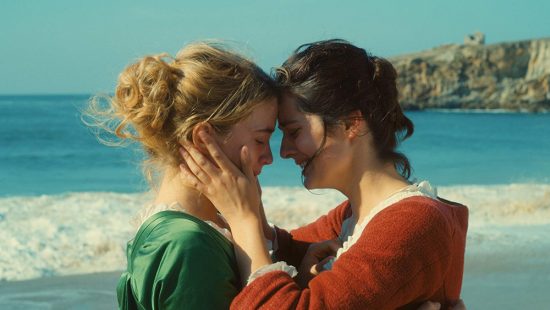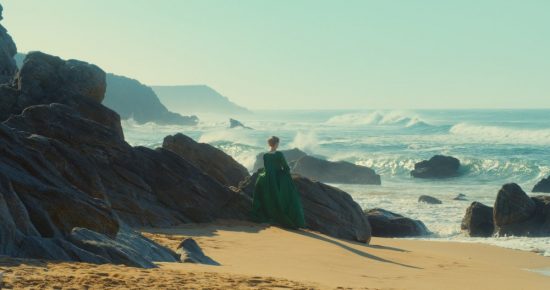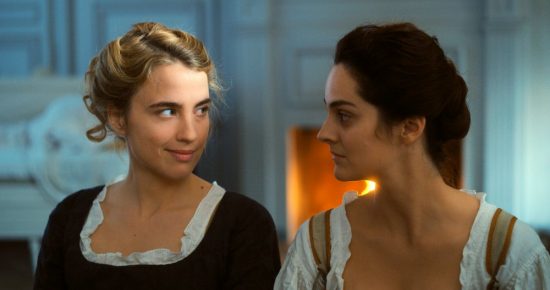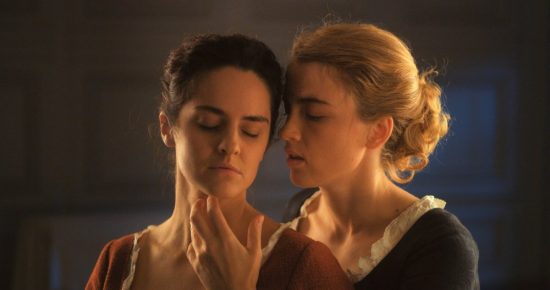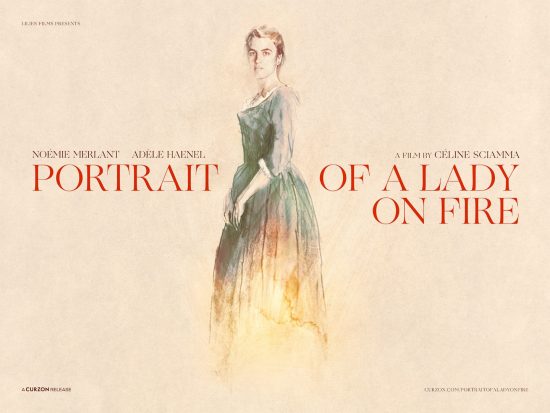Review: Portrait Of A Lady On Fire – “About as perfect as film gets”
Silence quite frankly suffocates Céline Sciamma’s generational new film. What goes unsaid, and what goes unheard, intensifies to a devastating and overwhelming crescendo which crashes into you like a roaring wave to shore. The lack of an orchestral score means the quiet soundtrack of an isolated, repressed life is all that rings through its lonely corridors. But in the warming sounds of wood crackling and popping in open flame earmarks a new sense of freedom and identity; like a phoenix rising from the ashes.
Like any great work of art, Portrait of a Lady on Fire is ignited and impassioned by its intricate details. A breath, a glance, a wayward smile. Singularly they might be slight, but collectively they are mighty. And like any great work of art, it’s a real feat trying to describe its magnitude. This is a revolutionary film; firmly among the finest of the 2010s. Sciamma has made her magnum opus – an exquisitely crafted, ingeniously intrinsic, and utterly absorbing character drama. It’s about as perfect as film gets.
Working from her own, Cannes prize-winning, screenplay, we arrive in Brittany circa 1770. An Italian noblewoman (Valeria Golino) has made preparations for her ravishing yet headstrong daughter, Héloïse (Adèle Haenel), to marry a wealthy prospective husband in Milan. In order to garner attention and agreement from this mysterious suitor, Héloïse must have a portrait painted – a difficult task when she outright refuses to pose, leading to the dismissal of a previously failed artist. A plan is hatched, and a “companion” enters the threshold.
She is Marianne (Noémie Merlant); brought in to accompany the young bride-to-be on coastal walks along the ravishing cliff faces. However, she too is an artist, and is tasked with completing a portrait painting in secret – studying her contours by day, and transporting them to canvas by night. Throughout their shoreline strolls, it becomes evident that a bond is forming, albeit one which firmly goes unspoken. Their companionship stems far deeper than friendship, or mutual respect, and quietly develops into a tidal wave of burning desire.
The unobtrusive nature of Héloïse and Marianne’s relationships is a true testament to Sciamma’s craft. Her characters grow organically; never are scenes played for melodramatic effect, never are motivations instigated to evoke unwarranted emotion. This approach enables Portrait of a Lady on Fire to simmer and smoulder – pulling us in with its intimacy and nuance, and rewarding us with its heart-stoppingly powerful climax. Trust this author when I say the final ten minutes here are absolutely astonishing; if only all films could conclude this perfectly.
Sciamma subverts genre expectations here with renegade finesse as she moves the gaze to an entirely female trajectory. Men are almost entirely non-existent here; merely murmured in passing conversations. The influence of men is akin to self-annihilation for Héloïse, too; who sees her arranged marriage like prepping a lamb for slaughter. She believes her freedom is being snatched, and longs in the recollection of her fond – if filtered – memories of time spent in the convent; a way of life which gave her music and literature.
As previously mentioned, silence is absolutely integral to the film – highlighting the overarching sense of suppression, and maximising the sheer weight of sound when sporadically used. Small sequences which feature diegetic or non-diegetic sound are unmistakably effective; piercing through the stuffy atmosphere like sunlight through a net curtain. The sense of clarity and feeling is breathtaking.
Considering Sciamma’s background lies heavily in social realism, it is most impressive to see such deft control over characterisation and circumstance within this creative framework – a lushly elegant, yet prickly and chilling period fanaticism. There are echoes of Alfred Hitchcock and David Lean here, discreetly lapping in the sea which cocoons their environment; a mystique and ghostliness which forces the hairs upon the nape to stand. Despite its swooning central romance, this is equally a thrilling, contorted drama which will place you firmly on the edge of your seat. Cinematographer Claire Mathon curates utterly ravishing imagery throughout as we are pulled through the lonely, candle-lit hallways to the rich, swirling sands; alive with crashing blue waves. She lenses a work of unforgettable postcard beauty. The colour palette on offer here has a distinct tonal impact, too; feeling simultaneously classic and otherworldly, as if their microcosm of 18th Century France is its own opulent habitat.
The collective performances are extraordinary. Haenel and Merlant turn in two of the finest screen-turns of the decade. Committing completely to every tonal beat and rhythm throughout, they render a pair of fated lovers who experience immeasurable passion, pain, and personal discovery across the two-hour duration. Sciamma’s choice to minimise dialogue in many of their shared scenes enables the central duo to emphasise their impeccable physicality; a trait so commonly dismissed in modern filmmaking.
Body language is at the very core of their connection – studying each other; understanding who they really are underneath the mass of cloth, and the paint upon the brush. Also fantastic is the unsung hero of the film, Sophie, played marvellously by Luàna Bajrami. She’s a kind and attentive servant girl, who takes a shine to Marianne and Héloïse, and together they grow a wholesome friendship bond. In less capable hands, Sophie could have felt entirely secondary – sidelined by the central partnership – but Sciamma expertly brings her into the fold with as much attention and admiration.
Opening and closing with all but a look, Portrait of a Lady on Fire conjures immeasurable power and potency in its subtlety. This incredibly shattering, stirring feature cannot be underestimated or overstated. It is a work of bewitching, entrancing beauty; observed and studied with haunting efficiency. In time, one fully expects it to be fondly recalled as one of modern films’ greatest offerings. Sciamma, Haenel, and Merlant have devised the closest thing you’ll come to cinematic euphoria. For the love of God, do not miss it.
Portrait of a Lady on Fire arrives in UK cinemas and via on-demand on 28th February 2020, courtesy of Curzon Artificial Eye.

